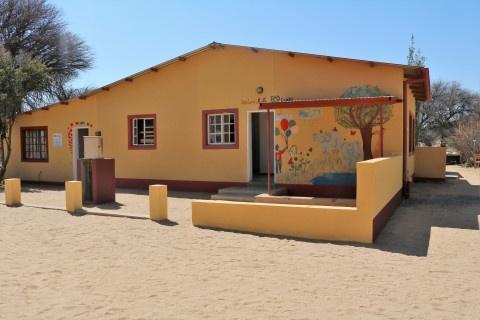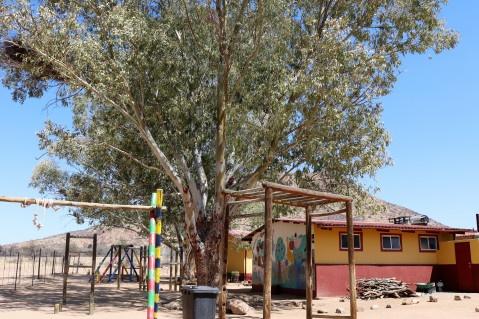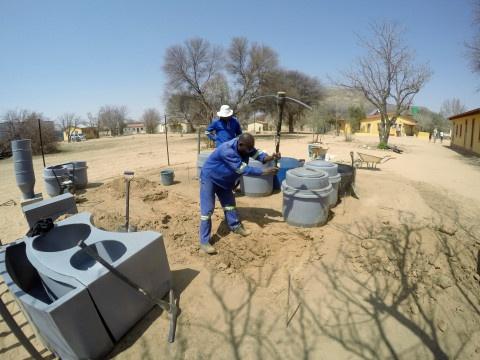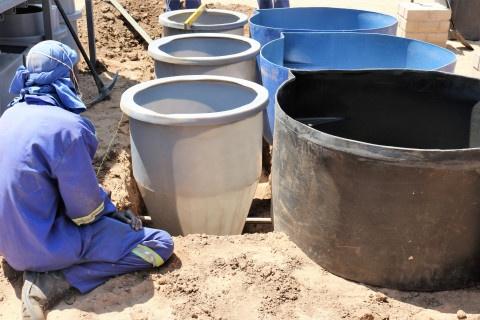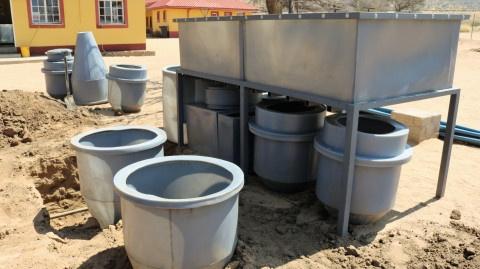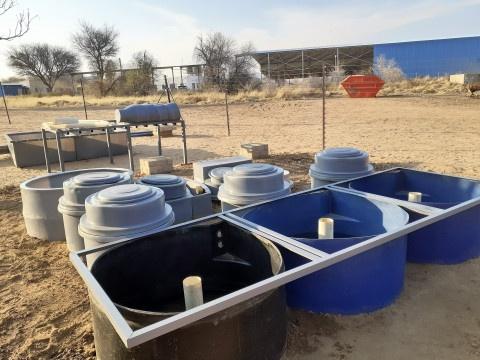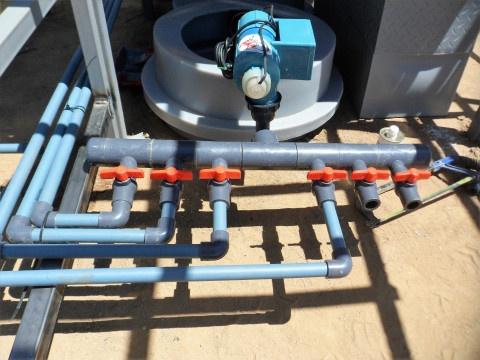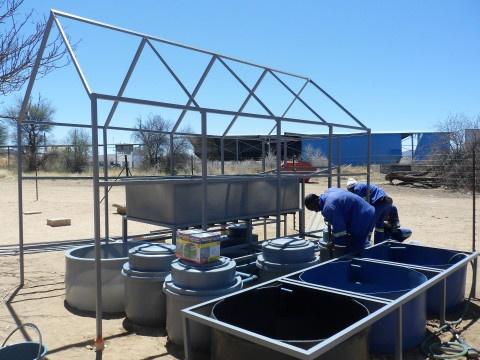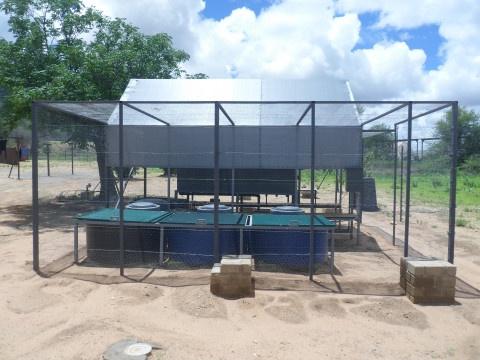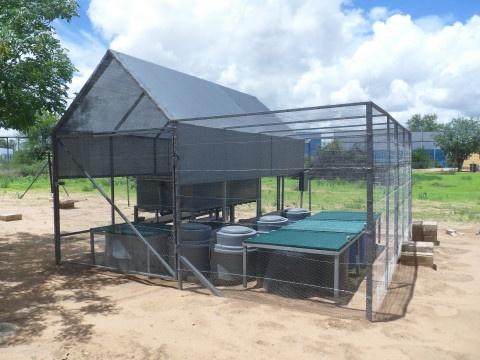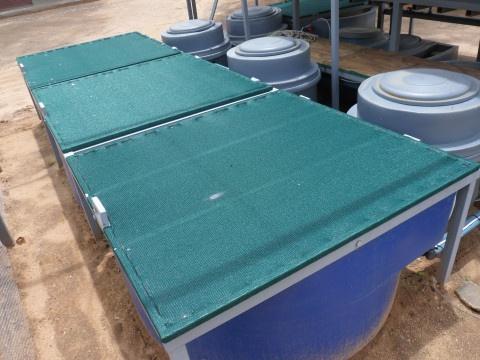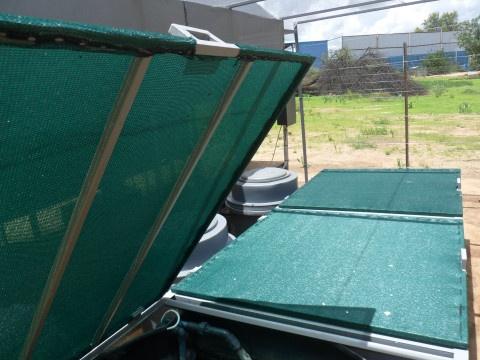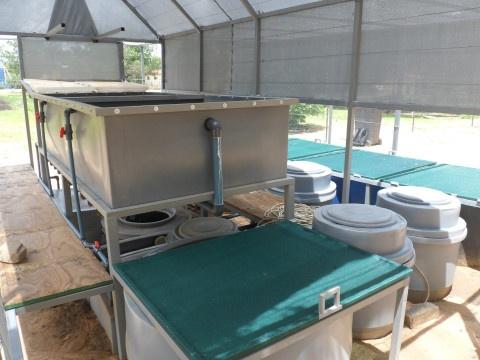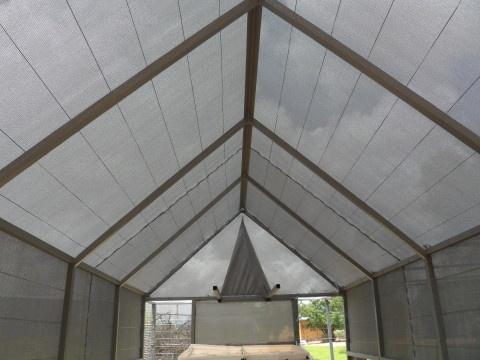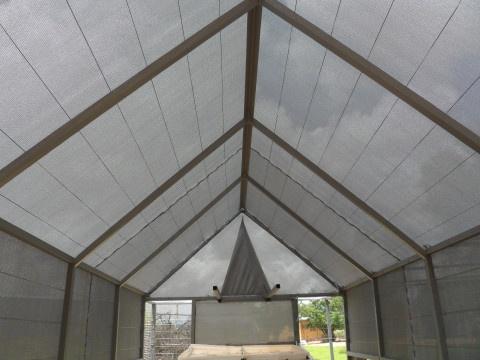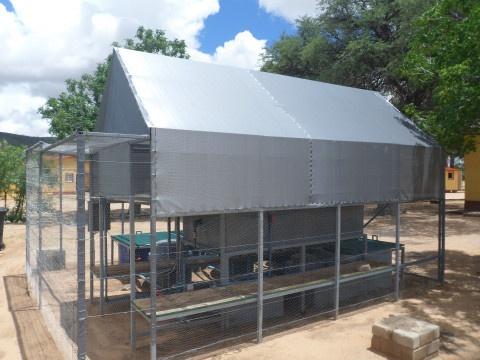Aris Primary School Aquaponics system
About Aris Primary School
Established in the 1980s, the Aris Primary School is one of Farm Krumhuk’s social initiatives. Situated about 20 km south of Windhoek, the school is situated in the Aris village, where it provides school for about 175 children from the 1st to the 7th grade. As a public boarding school, it also provides housing for families, teachers and the children.
The construction of the aquaponics commenced successfully shortly after the COVID-19 pandemic State of Emergency was lifted in September 2020. The Aquaponics Project contracted Eco Smart Water Technologies Namibia CC to construct and install our pilot aquaponics systems.
The team of five staff of Eco Smart Water Technologies Namibia CC were able to successfully build a modern, efficient and effective aquaponics system that is air-tight and will serve well as a pilot training system.
During the daily construction the aquaponics system the project documented and developed a series of educational videos, which will be used for the TH!NK Namibia social media education and awareness campaigns as well as for training.
The aquaponics team is happy to report that the aquaponics system at the Aris Primary School is fully installed and that the plumbing is running smoothly as expected.
The last additional construction work onto the system was the external fence structure visible in the above three photographs. This protective fence structure was initially not included but as time progressed, the team discovered the importance of protecting the system from vermin critters, such as mongoose, porcupines, birds and baboons.
Once inside the system structure, one observes the clear station-by-station, step-by-step layout of the system. Each section is clearly demarcated on purpose for ease of use. The first photograph above, on the left side show three blue fish tanks with a water capacity of about 800 to 1,000 litres each. Covered with green netting, the first fish tank will accommodate the breeding set of fish and is called the Breeding Tank. This tank will consist of one adult male and four adult female fish. The sole purpose of this tank is to continuously produce fry for the whole system with the breeding fish. In the tank are nesting cones. The females lay their eggs and the male fertilises the eggs. When the fry hatch, they are then moved to the second tank – the Fry Tank. In this second tank the fry are separated, fed and allowed to mature into fingerlings. The third tank is called the Fingerlings Tank and accommodates the fingerlings. The fingerlings will be fed and matured into broodstock and moved over to the fourth tank – the Broodstock Tank.
This second section of the system as indicated by the above two photographs showcase the Broodstock (adult fish) Tank at the bottom with the green cover. This 1,200 litre water tank holds about 80 to 100 large fish, which can be harvested once a month, if the fish growth is staggered correctly. The second photograph shows the vegetable planting and seedling tray and two large grow beds. These two grow beds will accommodate the crops grown in the system on floating rafts.
The above photographs reflect the shade netting and the complete structure of the Aris Primary School aquaponics system. The shade netting is important for shade to avoid the high rate of water evaporation and to provide just the right amount of sunlight for the plants to photosynthesize. The netting also provides for the protection of wind and serves as a deterrent for pests.
When you subscribe to the blog, we will send you an e-mail when there are new updates on the site so you wouldn't miss them.

